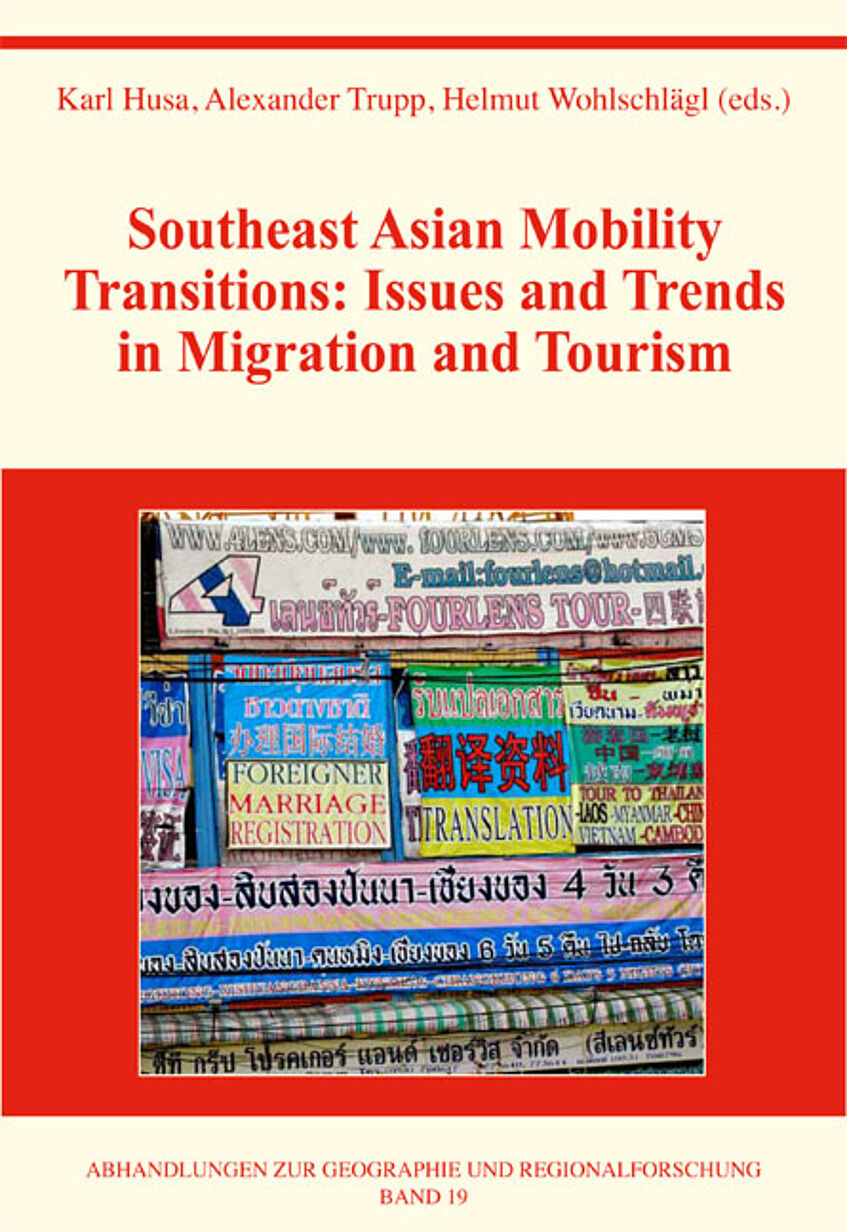ABHANDLUNGEN ZUR GEOGRAPHIE UND REGIONALFORSCHUNG • BAND 19

ISBN: 978-3-900830-84-7
Bestellung:
Tel. +43 / 1 / 4277 48603
E-mail: geographie@univie.ac.at
Preis:
EUR 35,- (für Studierende: EUR 25,–)
Karl Husa, Alexander Trupp, Helmut Wohlschlägl (eds.)
Southeast Asian Mobility Transitions: Issues and Trends in Migration and Tourism
Wien 2014, 452 Seiten
Over the past four decades, few large regions of the world have experienced such dynamic and rapid demographic, economic and social transformations as Southeast Asia. Changes in the patterns of spatial mobility of Southeast Asian populations within, into, and out of the region constitute important aspects in this regard.
The studies introduced in this volume reflect trends, continuations, and frictions of mobilities in Southeast Asia. Roughly speaking, they can be divided into two groups – one dealing primarily with issues of human migration, the other rather with various aspects of tourism – although it should pointed out that the scientific boundaries between migration and tourism research have recently become increasingly blurred. In tourism-related contexts, international travel motivations in the name of the “exotic other” remain, but travel groups from Asia are increasingly dominating the Southeast Asian tourist landscape, as several of the papers collected in this volume emphasise. In a similar way, the papers compiled in the “migration section” of the present reader highlight the long way that migration research in Southeast Asia has come in recent decades.
Whereas a few decades ago the focus of migration research in the region was almost entirely on “classical” migration patterns such as rural-urban migration or international out-migration of labour from Southeast Asia, today much more complex patterns of spatial mobility characterise the current migration system of the region. Several new forms of spatial mobility have emerged recently, such as in-migration of highly skilled, international retirement migrants or long-stay tourism, impressively demonstrating the blurring of the more or less arbitrary distinction between the “traditional” disciplines of tourism and migration research.
